After the utterly tragic earthquakes in Türkiye and Syria on February 6th of this year, my friends and I have been doing our best to help those affected.
We’re just a small group, so we can’t help at the scale that big NGOs with millions of dollars of funding can do.
But, we do speak Turkish, and we have been on the ground with people affected. So, we have been able to get to know people’s situations a little more one-on-one and personally than some big international organizations might be able to do.
Since the earthquakes, we’ve made several trips to cities and areas affected by the earthquake, bringing food, blankets, diapers, sanitary wipes, tents, and other supplies more to try to provide relief for those still living in these areas.
As time has gone on, one of the biggest needs that seems to be popping up and remaining largely unaddressed is that of toilets.
Because most people in the area rightfully don’t trust buildings and large structures anymore, and because running water in much of the region is basically non-existent (many of the cities’ main water lines having been destroyed in the quakes), much of the region has been been left without any viable options for safe human waste disposal and sewage treatment.
On account of that, a massive number of people are just using wherever they can to relieve themselves. Sometimes in fields, sometimes in back-alleys, sometimes behind trees.
Wherever they can.
A side-effect of this is that, instead of being processed by sewage treatment equipment, the feces and urine of tens of thousands of people are unavoidably being left just wherever it’s dropped. If you know much about diseases like Cholera, you know how dangerous that can be.
Indeed, doctors working in the area have issued an epidemic warning because of the lack of sanitation and sewage disposal. And cases of Cholera have been spreading through the region.
So, safe disposal of human waste is increasingly vital. And, the lack of it in the region is increasingly life-threatening.
There have been temporary toilets starting to be rolled out into the region, but most of the ones we’ve seen have required water to work. And unfortunately, as mentioned above, running water just isn’t really a thing right now. So, many of the toilets that have been deployed simply don’t work.

☝🏻 A temporary toilet set up for a tent city; unusable due to lack of running water.
As we were talking to people on the ground, we were trying to figure out what could be done about this.
I remembered from the Permaculture Design Course that I took in Jordan last year, as well as from a clip from the documentary Kiss the Ground that there are strategies for safe and sanitary disposal of human waste via very simple composting toilets.
All you really need is 1) a bucket, 2) a source of carbon like sawdust, and 3) some simple training for how to deal with the waste afterwards to allow it to turn into usable compost.
A scoop and a frame for the bucket (box & toilet seat) is also useful, but you can actually make the system work without them in a pinch.
We explained the idea to a few people who have been living in the earthquake zone, and showed them sample photos of the idea to see if a composting toilet would be something that they’d use. We thought the idea might be perceived as gross, and that people wouldn’t want to use them. However, the reaction was the opposite. Almost everyone we talked to was eager to get one, and said they would definitely use them.
One day we had delivered some aid to a family that had 50+ people living in just a few relatively small tents. When we mentioned the idea of these composting toilets to them, they said, “Please, yes! If you had something like that, that would be a godsend! The 50 of us are all just going behind those trees, and it’s awful.”
The need is great.
So we bought wood, toilet seats, buckets, and scoops from a nearby city, and got to work!
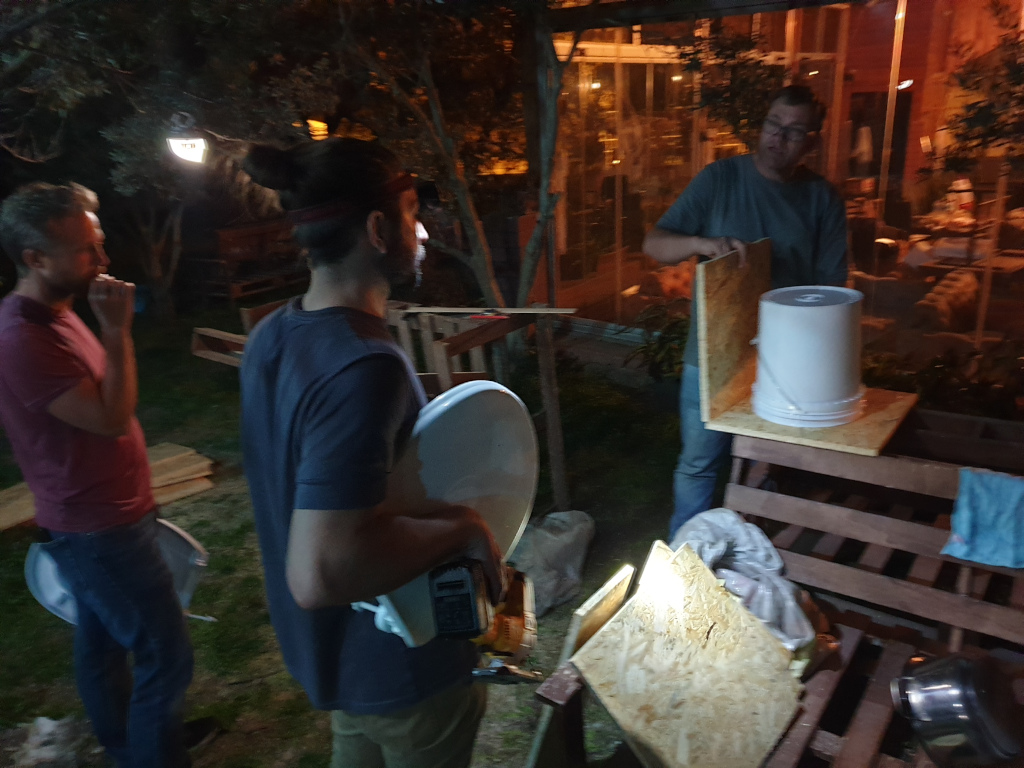
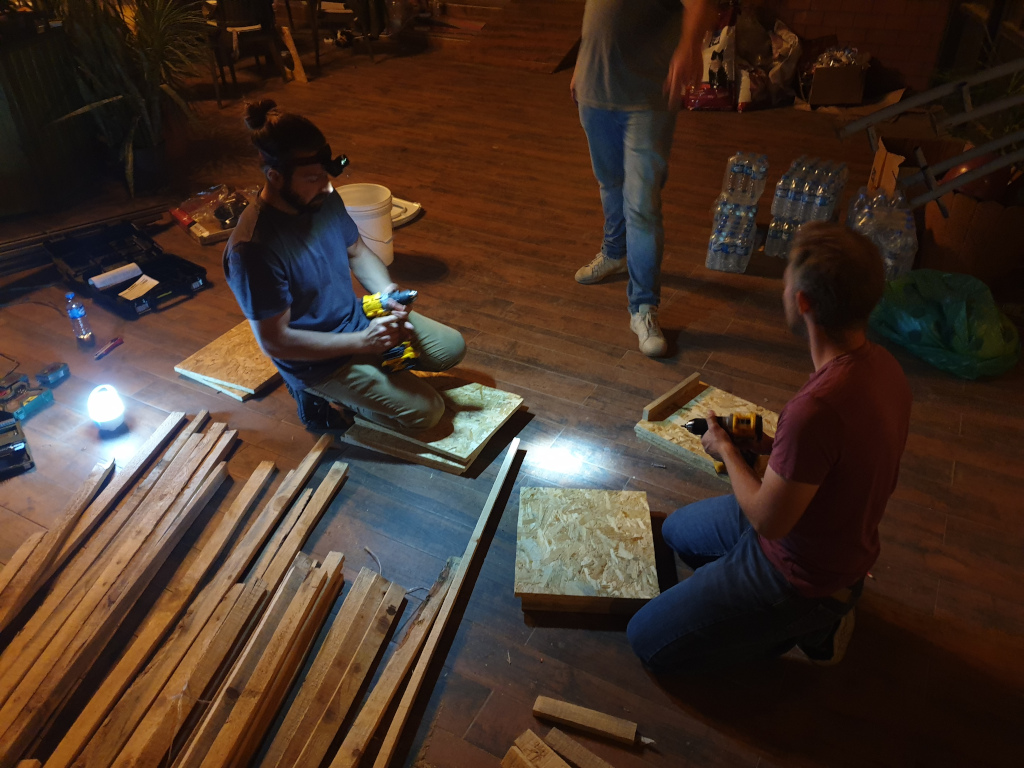

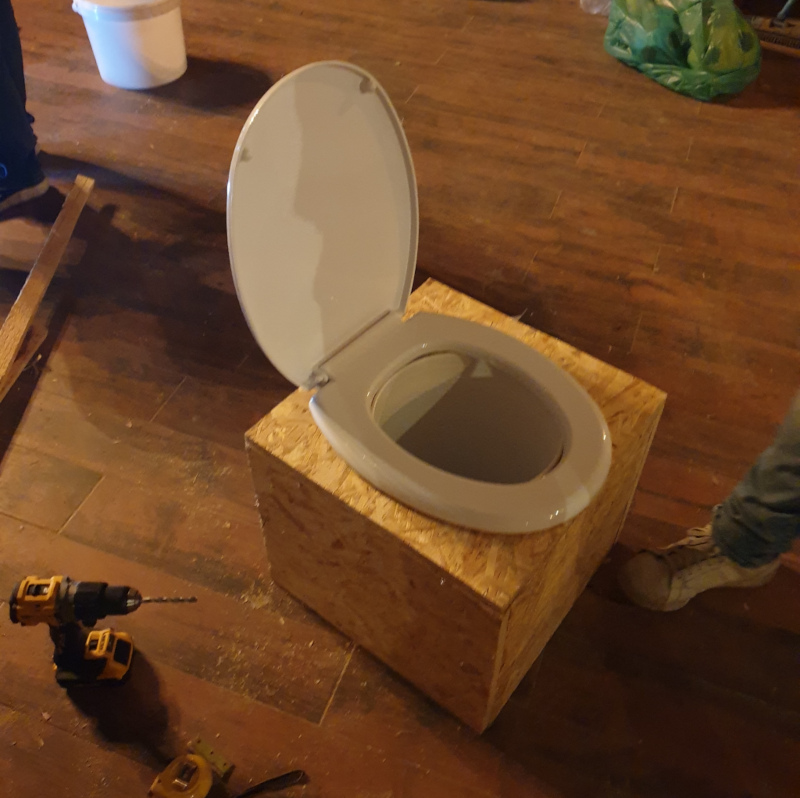
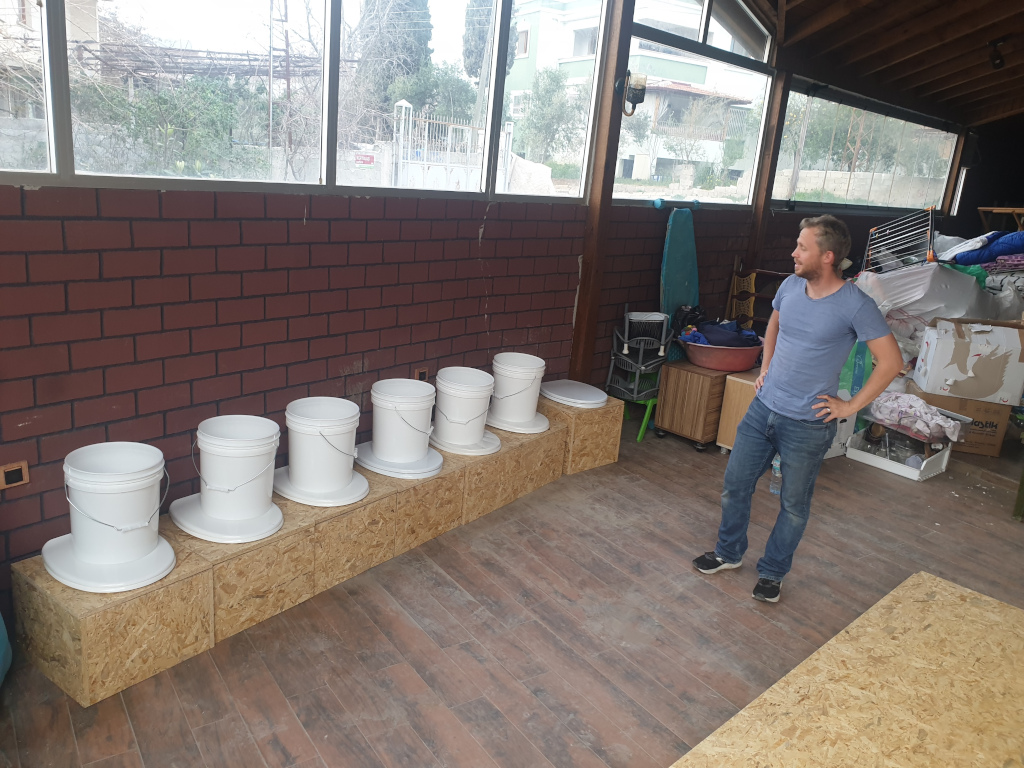
For a first phase of this project, we got enough resources to create 30 composting toilets. Though, there appears to be such a demand that we are ramping up production for many more in the coming weeks.
Here’s us delivering 6 completed ones, as well as pieces for one of our local partners to assemble another 10 toilets:
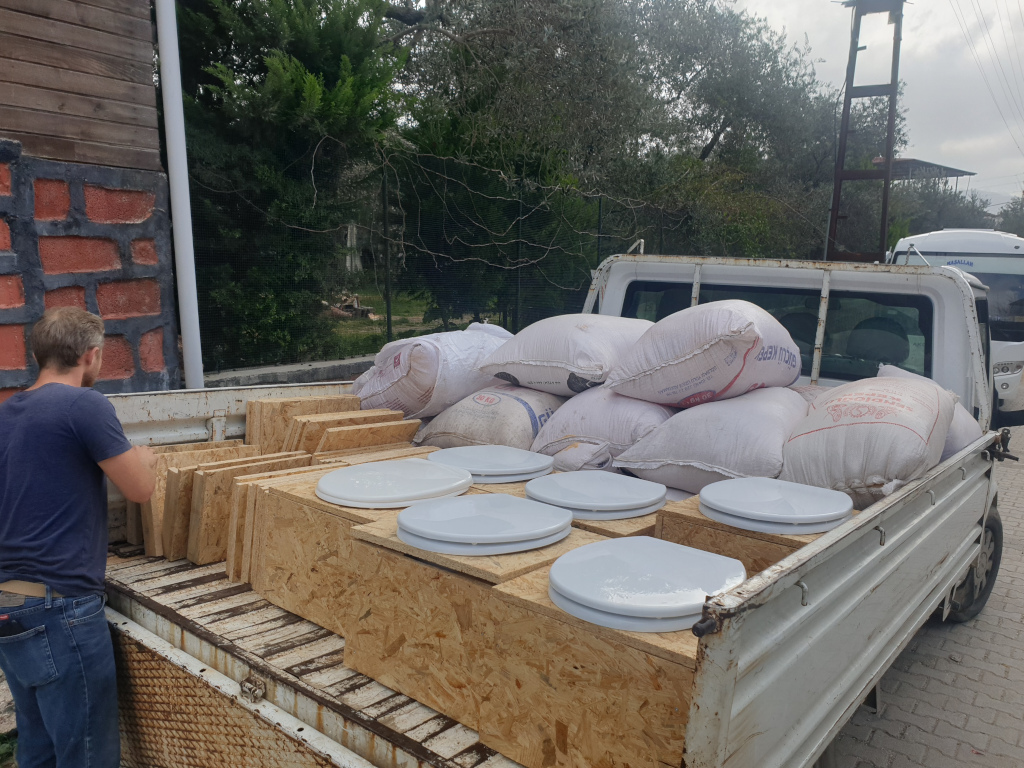
When we started distributing them, they were a hit! A mother in the camp I mentioned above was tearing up as we gave them the first one. She was saying, “thank you so much, praise God, we’ve needed this so badly 🥲.”
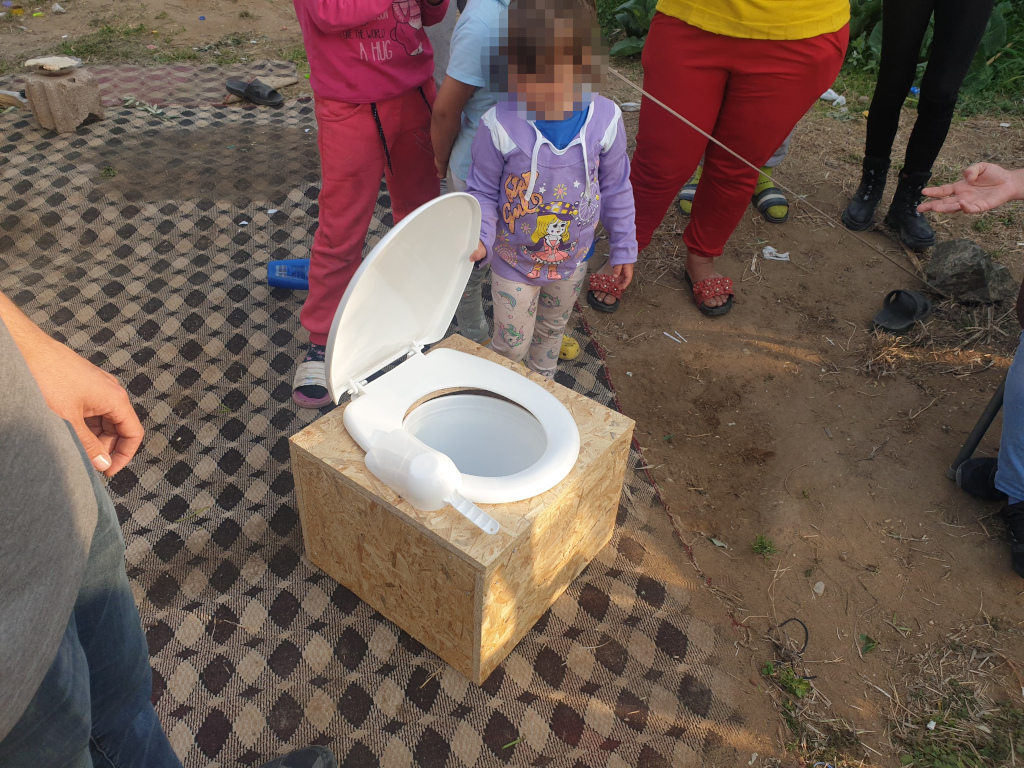
Because the sawdust actually completely removes the smell of feces and urine from the toilet when you use them properly, some of the elderly and crippled people in camps we served actually ended up setting up their toilets right in their tents. It ended up being a much better solution for them than if they had needed to leave their tents to use a toilet somewhere else. And because there’s no smell, keeping the toilets in their tent wasn’t an issue.
We also created a simple site at KompostTuvalet.org, including an instructional poster that can be downloaded, shared, and printed, and an audio version of the instructions for anyone who is illiterate but needs to understand how to use the toilets safely. We’ll add to that site (and make it more aesthetically appealing) as time goes on. We’re planning to post instructions for how to build one of these toilets from scratch, further translations for people needing this resource in other languages, as well as other similar helpful solutions for people in these kinds of situations.
At this point, you might be wondering where we got enough sawdust to equip dozens of families (and, soon to be hundreds of families) to be able to use composting toilets.
Well, we actually ended up getting connected with a guy who had a storehouse full of sawdust that he was selling for heating and farming purposes before the earthquake. His storehouse was actually destroyed in the earthquake. He now has about 60 tons of sawdust stock underneath the rubble his storehouse. We were able to buy about 2 tons of stock off of him to set up these families with toilets, and we’re planning to continue to help buy his stock as we roll out new toilets, and as he’s able to get machines in to excavate the rubble.
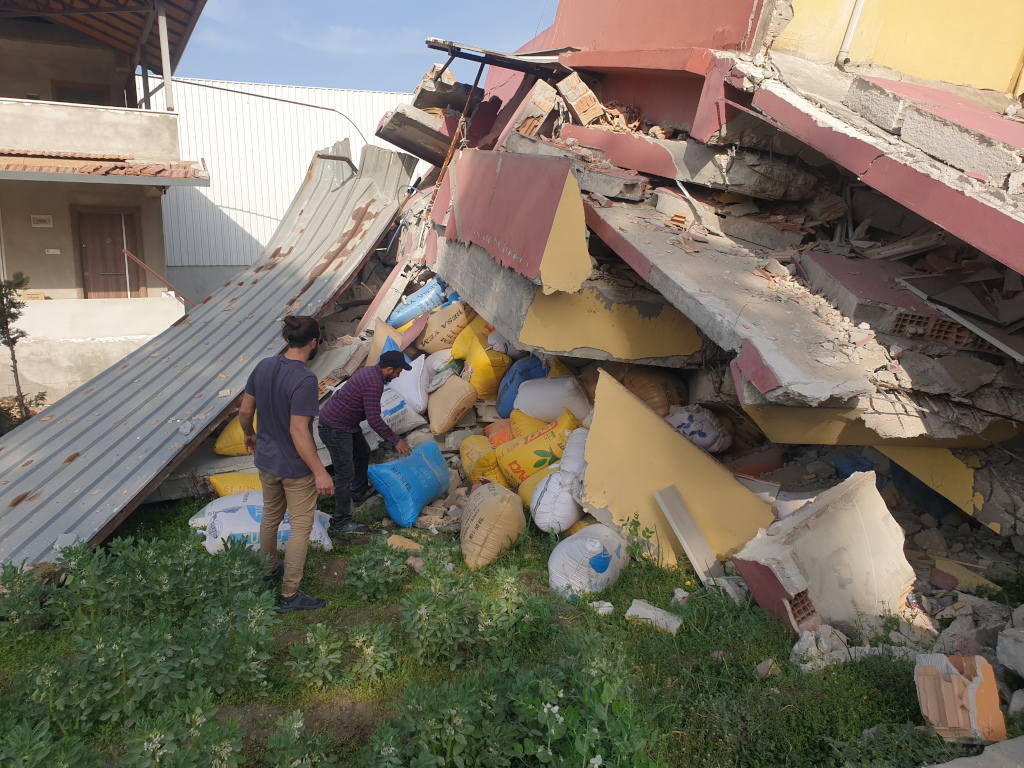
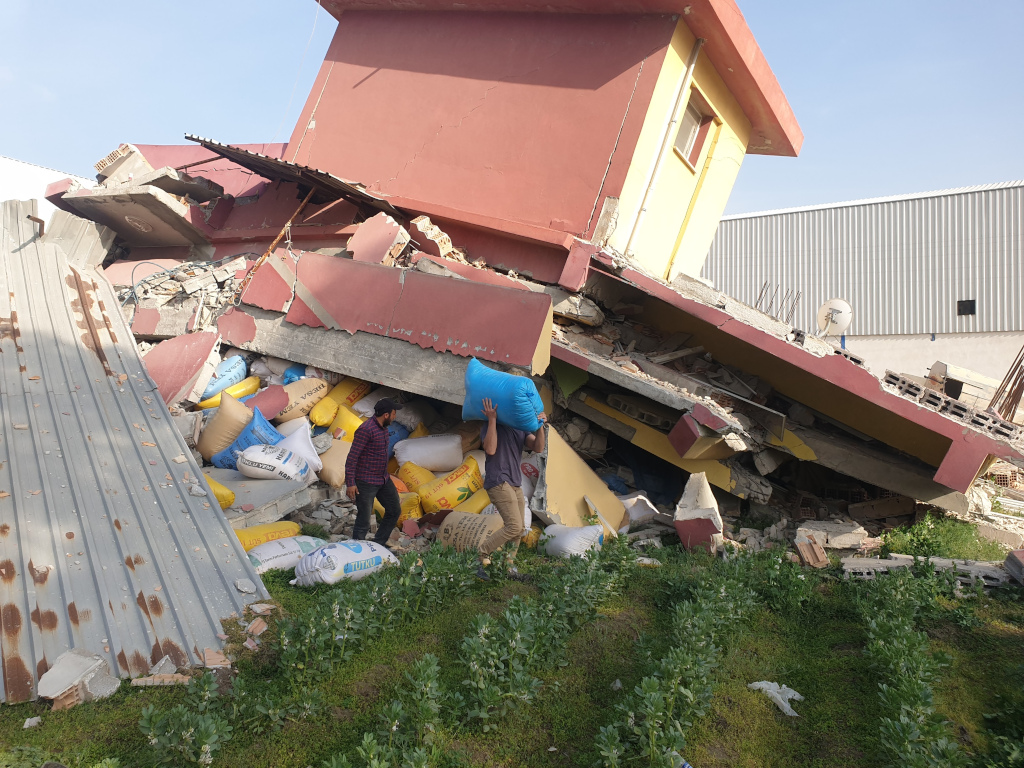
We’re also in conversations with NGOs in the area who are interested in rolling these out around the whole affected region, so we’re trying to figure out how best to scale this up! We’re considering commissioning a plastic injection mold to be able to create the frames for these toilets much cheaper and faster than we’re currently able to do with wood. That would allow us to roll out potentially thousands of these toilets around the region for fairly cheap.
We’re also looking into other low-resource high-impact solutions to be able to help earthquake survivors in with sanitation, clean water, and other needs. One solution we’re exploring that has worked well in the past in other refugee and IDP camps around the world is Reed Bed Water Filtration systems, which, when they’re set up correctly, can effectively filter sewage “black water” for very cheap and efficiently, without electricity.
A friend of mine who has deployed systems like this in IDP camps in Iraq is planning to come sometime this month to help us best figure out how to deploy more of these kinds of solutions to help keep people in the earthquake zone safe and healthy.
So, that’s what I’ve been up to these last couple weeks! Thanks for reading!
